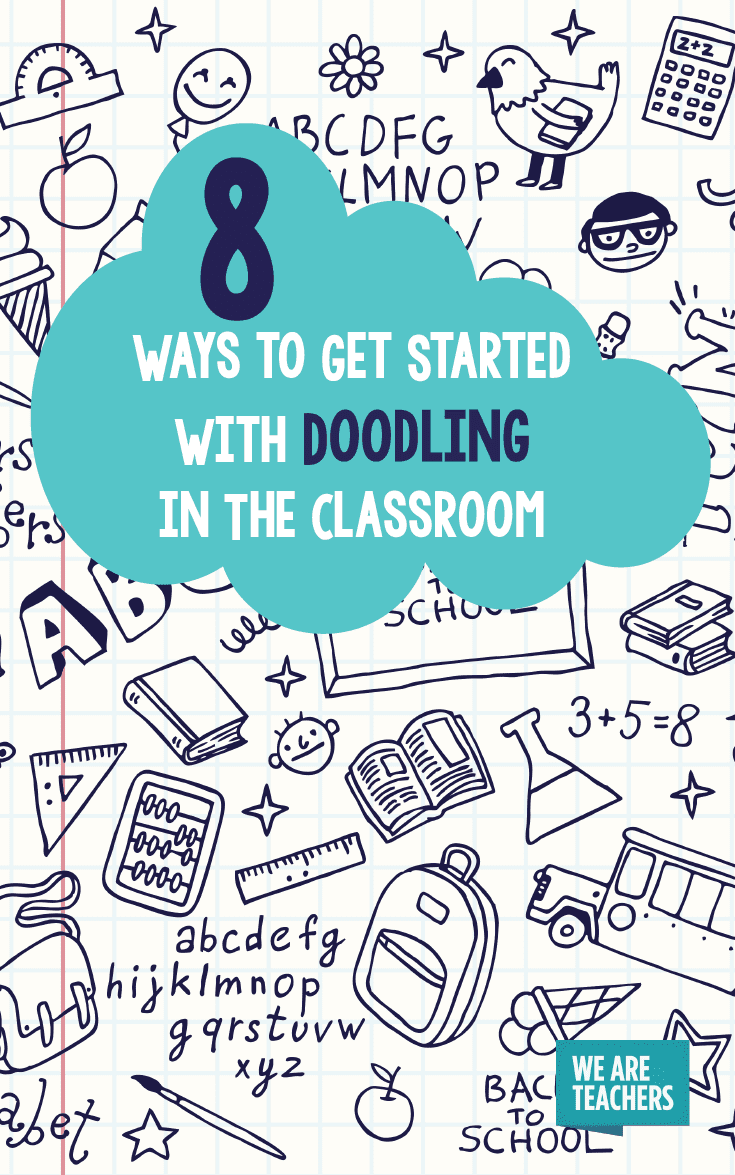The days of doodling as a pointless exercise are over. It’s time to doodle with purpose! Doodling has many benefits for the brain, which aids in the learning process for students. Studies and articles have been telling us for years about the benefits of doodling. For example, it helps concentration, inspires creativity, improves retention, and supports visual thinkers. If you want to introduce doodling in the classroom, here are eight ways to get you started.
1. Start with the basics.
No drawing experience? No problem! Use simple shapes and stick figures to get your point across. Dan Roam, a visual-thinking advocate and the author of Draw to Win, suggests using the following five simple shapes: square, circle, triangle, line, and blob. These basic shapes and stick figures provide students a basis from which to start drawing.

2. Offer a doodling lesson.
At first, students may not even know where to begin doodling. It might seem odd to do a lesson on doodling, but it’s not! During a lesson, provide students with explicit examples of what or when to doodle. Say things like, “This might be a good time to sketch out your thoughts” or “Try visualizing this concept using a doodle.”
3. Find inspiration in a video.
Watch a TED Talk like this inspirational one from Sunni Brown (author of The Doodle Revolution) or other online video in class or as part of a flipped classroom model. Encourage students to doodle while watching the video. Afterward, encourage students to share doodles during an in-class discussion.
4. Keep doodling prompts nearby.
Students need more inspiration? Keep a classroom-inspiration notebook with prompts and suggestions for doodling. If students feel particularly inspired, let them add their own suggestions for other students.
5. Replace worksheets with doodling.
Are your students tired of doing worksheets? Are you tired of grading worksheets? Replace worksheets with doodles. Allow students to submit doodles instead of taking notes or filling out worksheets. Doodling can be a good alternative to content check-ins.
6. Try group doodling.
Instead of a bulletin board display, create a class doodle wall. Put up a blank piece of paper and allow students to doodle during the school day. The board is a group effort and becomes a work of art.

7. Make concept maps while doodling.
When introducing new concepts, have students create visual representations of content. Creating a concept or mind map can help students understand and retain information.

8. Learn from the experts.
Doodling may be new to your classroom, but you are not alone in your doodling experience. There are many great doodling experts and visual-thinking resources online to help you along the way. Khan Academy has a video series on doodling and math concepts. The website Sketchnote Army, created by designer Mike Rohde, showcases sketchnotes from around the world.


